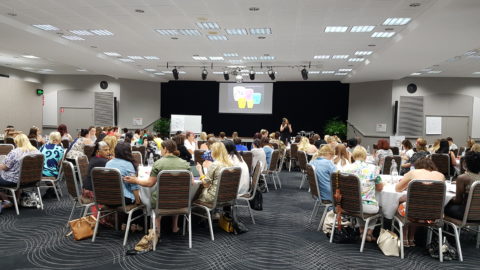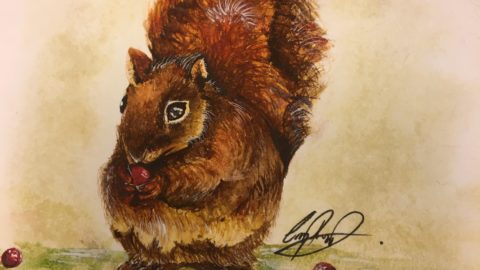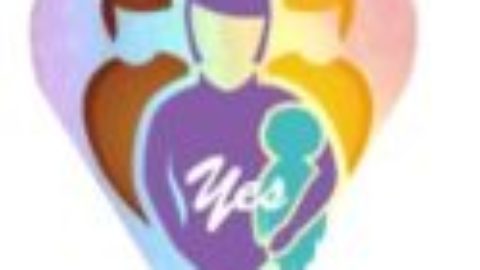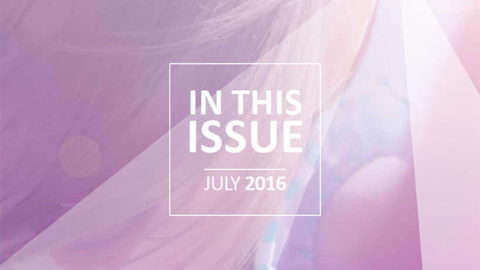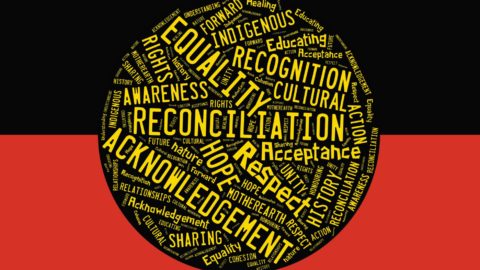Written by Dr Red Ruby Scarlet, Creative Director of MultiVerse: a community organisation committed to art, inclusion and education.
Listen to Dr Red narrate her article (or read in full below)
Truth Tales – Nature and Culture In Early Childhood
Once upon a time there was a teeny tiny little early childhood education centre called ‘Woodling Spring’ nested in the bush. Its walls were made of air and the sky and its floor was made from the deep green nettles of a pine tree that look like elephant’s legs. The chairs and tables were made of scrubby sandstones that happened to be close by and the children played with cool dark dirt and grass and gnarly knobby sticks and the contextual cacophony of resident bugs, birds and insects and occasionally an overnight animal poo.
The educators documented children’s learning on their iPads and computers (charged by solar power) and regularly SMS’d the families with images and they sent little ‘snapchats’ of their children at play in the latest app. The children learned how to capture their own learning using these various technologies which were considered to be reflective of the culture of families and their home like environment.
Some people thought it was simply a natural environment. Others thought it was a cultural construct made of natural materials. Others thought it was a nature-culture-sculpture! (because they read page 11 of the Early Years Learning Framework and were exploring ‘post’ theories). Yet it was hard to find a single truth with which to describe this teeny tiny little early childhood education centre.
“The assessors will say there’s no soft fall” and “That sky is more than a meter high”.
Impassioned early childhood educators committed to best practice took their various stories of Woodling Spring to Facebook to let it face judge and jury in order to find the truth – beyond reasonable doubt. The teeny tiny centre suddenly created a big fuss. The overwhelming love for Woodling Spring as a natural place for children to freely play and learn met an overwhelming indictment of regulation and risk: “NQS” they capslocked loudly. “The assessors will say there’s no soft fall” and “That sky is more than a meter high”.
In reply the lovers of Woodling Spring EYLF’d their stance in this freedom v’s risk dance. “Let them be free to explore” and “We love a puddle and a dirt floor” “Keep that iPad off the floor”.
All the while the fence sitters sat.
Contemplating the law and the lay of this wide brown land. And how to find a workable space in the places they found themselves working – where sometimes ‘outdoors’ was ‘inside’. And of course there are such things as indoor plants and gardens across cultures, across the world, though it is the faux grassy knoll and the indoor sand pit in a land where space, grass and sand are a plenty outdoors. They’re safe? For the body? For the mind? For the spirit? What is this natural or cultural safety to which we may cling?
’Tis a circumstance that is tricky to change with only an either/or option of what counted as ‘good’ and ‘bad’ or ‘right’ and ‘wrong’. Instead, those fence sitters were searching for what could be done to create opportunities in existing spaces where children could benefit from natures gifts in pockets of pedagogy that enabled some risk despite their faux physical conundrum.
This takes understanding and deep listening and discussion and time so that educators can articulate how and why. Changing times require a broader discussion that is open to the diversity of Australian contexts given that they vary vastly. To tackle the issues when our colleagues have both the desire and the courage to nudge away at change that may enable new horizons for discussion and debate and in doing so create an ongoing culture of critical enquiry to generate an early childhood education that is dynamic, well thought out and supported professionally – even when its not the absolute truth we think it should be…
Thinking through truth tales about nature and culture in early childhood
Which truth tales do you value and why?
Remember these truth tales are a collection of different points of view for thinking about and discussing with your colleagues – they are not a set of facts or rules:
- Nature is beneficial for children’s learning and development
- Nature is different in different cultures, places and spaces this impacts on children’s learning and development
- Not all nature is natural
- Educators use technology to capture children’s learning and developing in nature
- Some children’s centres have indoor ‘outdoor’ play spaces that are called ‘natural’
- Some indoor ‘outdoor’ play spaces have artificial grass
- Some indoor ‘outdoor’ play spaces have natural materials
- Natural play places and spaces create measured risks that is critical to children’s learning and development
- Simulated play places and spaces create measured risks that is critical to children’s learning and development
- Artificial grass is a natural material
- Nature has its own memory and knowledge and culture.
Helpful Links To Think About Nature and Culture In Early Childhood
(Australian based links are used where possible)
Practical/Networks:
Practitioner Resources/Articles:
- http://www.snaicc.org.au/resources/
- http://www.earlychildhoodaustralia.org.au/our-publications/every-child-magazine/every-child-index/every-child-vol-19-4-2013/use-digital-technology-early-childhood/
- http://files.eric.ed.gov/fulltext/ED497537.pdf
- https://www.reggioaustralia.org.au/index.php?option=com_content&view=article&id=67&Itemid=103
- http://www.naeyc.org/files/naeyc/file/positions/PS_technology_WEB2.pdf
Support Resources/Videos:
- Worldviews, Theories and Philosophies in Children’s Services: http://bit.ly/28YFadN
Research:


